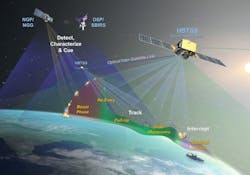Northrop Grumman completes hypersonic and ballistic tracking space sensor critical design review
REDONDO BEACH, Calif. - Northrop Grumman Corporation recently completed the critical design review of the Hypersonic and Ballistic Tracking Space Sensor (HBTSS) prototype for the U.S. Missile Defense Agency (MDA). The review establishes the company’s technical approach for precise, timely sensor coverage to defeat ballistic and hypersonic missiles.
HBTSS satellites will provide continuous tracking and handoff to enable targeting of enemy missiles launched from land, sea or air. They are a critical part of the Overhead Persistent Infrared (OPIR) multi-layered constellation of satellites, which can sense heat signatures to detect and track missiles from their earliest stages of launch through interception.
HBTSS satellites are also designed to track threats with near global reach when prompted by other OPIR systems, well before they come into view of U.S. ground-based defenses.
Northrop Grumman received a $153 million contract from the MDA earlier this year for the Phase IIB portion of the HBTSS program and is on schedule to deliver the HBTSS prototype in 2023. After the HBTSS prototype is delivered, the company will conduct an on-orbit test to demonstrate its ability to continuously track and rapidly process its observations of hypersonic threats, as well as its ability to effectively hand off the information so the missile is intercepted.
